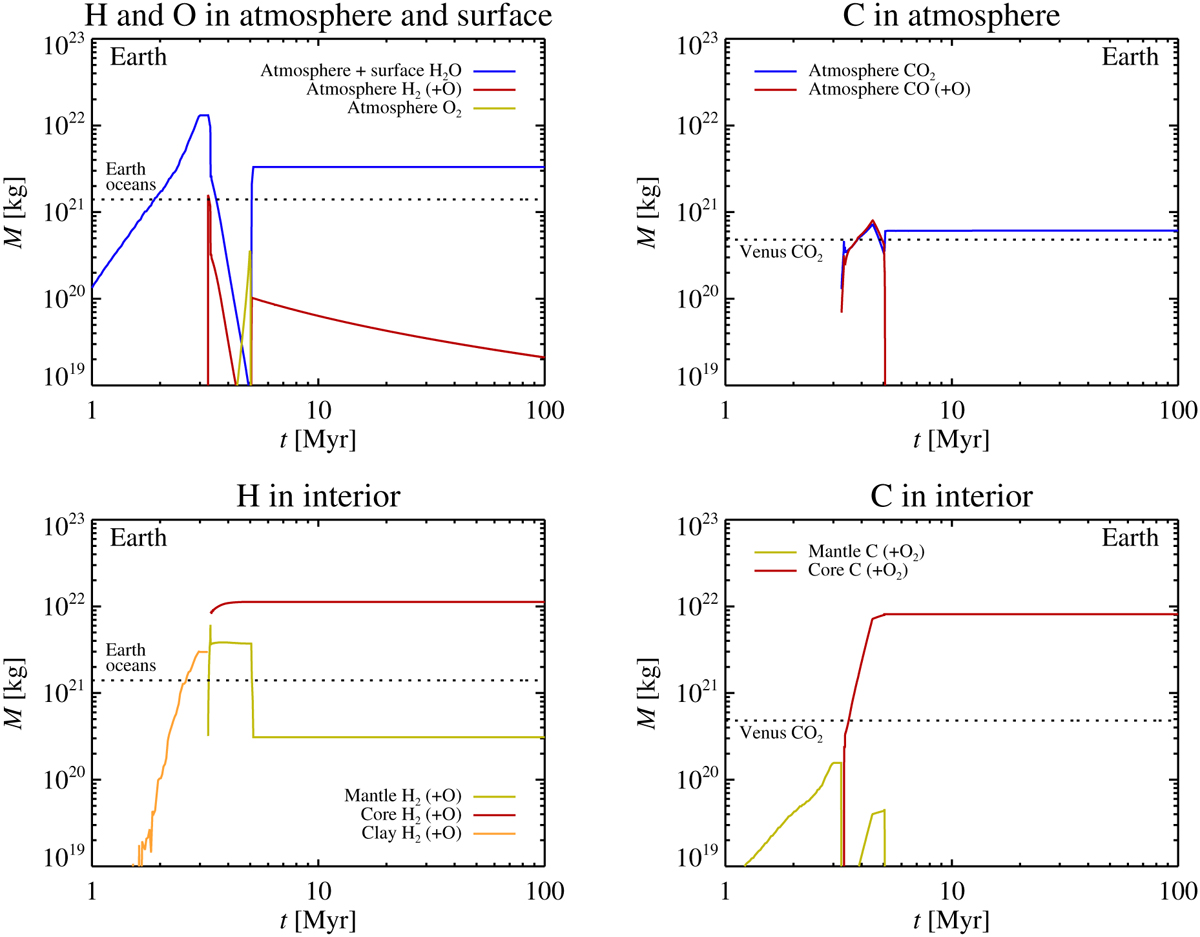Fig. 2

Download original image
Evolution of H-bearing (left panels, including O2) and C-bearing volatiles (right panels) in the atmosphere and surface (top panels) and interior (bottom panels) of our Earth analogue. Hydrogen resides initially in a massive surface layer of ice and water and an interior layer of clay. The onset of the run-away greenhouse effect after 3.5 Myr heats the surface to form a global magma ocean. The water dissolves in the magma and partitions within the magma ocean strongly into the metal melt. The core of Earth incorporates after the termination of accretion more than 90% of the total hydrogen and carbon budgets. The oxygen fugacity of the magma ocean rises with increasing temperature and hence O2 becomes the dominant molecule in the atmosphere at the end of the accretion stage; this oxygen is nevertheless dissolved back into the magma ocean as it cools. The terrestrial magma ocean expels approximately one modern ocean mass of water after crystallization of the magma. The oxidized atmosphere of Earth avoids any extensive mass loss by XUV irradiation and maintains an atmosphere consisting mainly of CO2 with a mass similar to modern Venus’ atmosphere.
Current usage metrics show cumulative count of Article Views (full-text article views including HTML views, PDF and ePub downloads, according to the available data) and Abstracts Views on Vision4Press platform.
Data correspond to usage on the plateform after 2015. The current usage metrics is available 48-96 hours after online publication and is updated daily on week days.
Initial download of the metrics may take a while.


